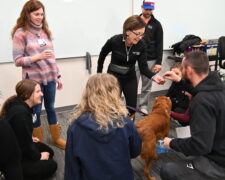Guatemala Medical Mission Trip
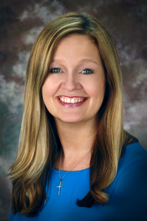 Guatemala Medical Mission Trip
Guatemala Medical Mission Trip
By: Lynn Murphy MSN, RN, APNP, CPN
Bellin College Faculty
January 29, 2016
During the week of January 10th – 17th, I had a life changing opportunity to travel as a faculty member with a team of 14 Bellin College nursing students and 2 additional faculty, (Sue Rymer and Malina Herber) to the east coast of Guatemala for a nursing focused mission trip. We coordinated our trip through a Christian based mission which helped us facilitate our visits to the city of Puerto Barrios and the area villages of Aldea Nueva, Rio Salado, and Baltimore. Guatemala is a poor nation, with 74% of the population living in poverty, 54% living in extreme poverty, and a per capital income of US $5,200/year. Guatemala has the largest economy in Central America but is among Latin American countries with the highest levels of inequality, with poverty, especially in rural and indigenous areas being one of the highest in the region.
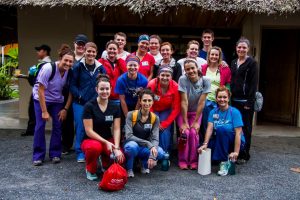 Traveling to Puerto Barrios, Guatemala by small boat, our group was struck by the sites and sounds of an impoverished city with limited public works in regards to basic sanitation. The streets, crowded with people on mopeds and small vehicles all racing to get to their intended destinations. Once at the children’s hospital we quickly realized that we were going to experience a healthcare delivery model that was very different to what we were used to. The children’s hospital in Puerto Barrios is the only public pediatric hospital in the country. It is run by a phenomenal staff whose main focus is to provide the very best care possible with limited resources. Access to what we consider to be essentials for nursing delivery was limited. Infants and children are placed in wards rather than rooms, where you will find steel slatted cribs that must hold infants through adolescents. Their parents are given a chair to sit on next to the crib during the day, and if they need to sleep, they sleep on the tile floor beneath the crib. The basics of reliably clean water for drinking and bathing, diapers, medications, and IV fluids were extremely limited.
Traveling to Puerto Barrios, Guatemala by small boat, our group was struck by the sites and sounds of an impoverished city with limited public works in regards to basic sanitation. The streets, crowded with people on mopeds and small vehicles all racing to get to their intended destinations. Once at the children’s hospital we quickly realized that we were going to experience a healthcare delivery model that was very different to what we were used to. The children’s hospital in Puerto Barrios is the only public pediatric hospital in the country. It is run by a phenomenal staff whose main focus is to provide the very best care possible with limited resources. Access to what we consider to be essentials for nursing delivery was limited. Infants and children are placed in wards rather than rooms, where you will find steel slatted cribs that must hold infants through adolescents. Their parents are given a chair to sit on next to the crib during the day, and if they need to sleep, they sleep on the tile floor beneath the crib. The basics of reliably clean water for drinking and bathing, diapers, medications, and IV fluids were extremely limited.
During our 2 days at the hospital we learned that a Guatemalan nurse is 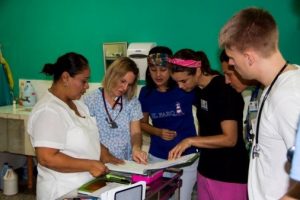 considered a “Professional Nurse” after 5 years of education. They wore freshly pressed white uniforms with traditional nurse caps on their heads. Nursing staff who had received 2 years of education wore white and blue uniforms to identify themselves, their education seemed to be similar to a blend of CNA and LPN preparatory programs. As faculty, we were asked by the nurses why our students wore stethoscopes around their necks. When we replied, that they were used during their head-to-toe assessments, they were very surprised since only physicians use stethoscopes in the hospitals, and that they had not learned how to use one while in school.
considered a “Professional Nurse” after 5 years of education. They wore freshly pressed white uniforms with traditional nurse caps on their heads. Nursing staff who had received 2 years of education wore white and blue uniforms to identify themselves, their education seemed to be similar to a blend of CNA and LPN preparatory programs. As faculty, we were asked by the nurses why our students wore stethoscopes around their necks. When we replied, that they were used during their head-to-toe assessments, they were very surprised since only physicians use stethoscopes in the hospitals, and that they had not learned how to use one while in school.
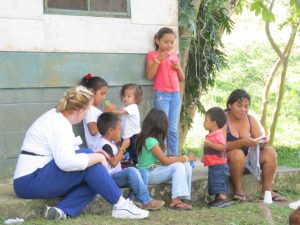 The most overwhelming of days was the afternoon that we set up a clinic in the Puerto Barrios dump. The dump is about the size of 3 football fields, piled high and deep in the garbage of the city. Here, approximately 300 people work and live. Residents survive on things that they find in the dump to build modest huts and shacks around the perimeter of the dump. We learned that there are 42 infants under the age of 1 year who reside in the dump. Sex-trafficking occurs here, with children being involved. We learned that children as young as toddlers are sold for sexual services for less than $5 US dollars. What we experienced on that day, providing nursing services to the residents there can not easily be put into words. Overwhelming and heartbreaking are only two descriptors, yet these words are so limiting.
The most overwhelming of days was the afternoon that we set up a clinic in the Puerto Barrios dump. The dump is about the size of 3 football fields, piled high and deep in the garbage of the city. Here, approximately 300 people work and live. Residents survive on things that they find in the dump to build modest huts and shacks around the perimeter of the dump. We learned that there are 42 infants under the age of 1 year who reside in the dump. Sex-trafficking occurs here, with children being involved. We learned that children as young as toddlers are sold for sexual services for less than $5 US dollars. What we experienced on that day, providing nursing services to the residents there can not easily be put into words. Overwhelming and heartbreaking are only two descriptors, yet these words are so limiting.
We rounded out our week by setting up clinics in an abandoned teak tree farm 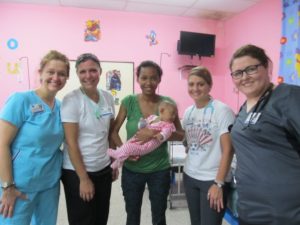 about a 45 minute truck ride through the jungle forest of Izabal. There we set our clinic, teaming up with dentists and medical students from Guatemala City to provide nursing, medical, and dental care. We cared for and treated patients with intestinal complaints due to amoebas and other worms, respiratory complications due to open pit fires and the lack of chimneys in homes, open skin wounds related to the conditions of the jungle and the lack of decent shoes, musculoskeletal injuries associated to the repetitiveness of their work (swinging machetes to clear the jungle and hauling water jugs, often on top their heads), parasite infections (lice and scabies), and rampant dental decay aggravated by the amoebas in the water which forces parents to choose bottled soda over water.
about a 45 minute truck ride through the jungle forest of Izabal. There we set our clinic, teaming up with dentists and medical students from Guatemala City to provide nursing, medical, and dental care. We cared for and treated patients with intestinal complaints due to amoebas and other worms, respiratory complications due to open pit fires and the lack of chimneys in homes, open skin wounds related to the conditions of the jungle and the lack of decent shoes, musculoskeletal injuries associated to the repetitiveness of their work (swinging machetes to clear the jungle and hauling water jugs, often on top their heads), parasite infections (lice and scabies), and rampant dental decay aggravated by the amoebas in the water which forces parents to choose bottled soda over water.
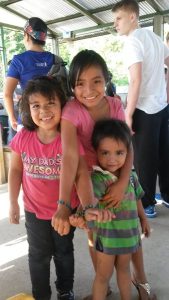 We left Guatemala feeling overwhelmed, exhausted and enriched. It was definitely a life changing mission trip. We were touched by the people we served and cared for. I think often of the infants and children in the hospital, the nurses who devote their lives to their care, the small children in the Puerto Barrios’ dump with no shoes, the elders we visited and delivered food to in the villages, who welcomed us into their homes, the parents who carried their children such long distances to reach our clinics held at the teak farm, and of the missionaries who guided us, and continue on in their service for the people of Guatemala, every day of the year.
We left Guatemala feeling overwhelmed, exhausted and enriched. It was definitely a life changing mission trip. We were touched by the people we served and cared for. I think often of the infants and children in the hospital, the nurses who devote their lives to their care, the small children in the Puerto Barrios’ dump with no shoes, the elders we visited and delivered food to in the villages, who welcomed us into their homes, the parents who carried their children such long distances to reach our clinics held at the teak farm, and of the missionaries who guided us, and continue on in their service for the people of Guatemala, every day of the year.

